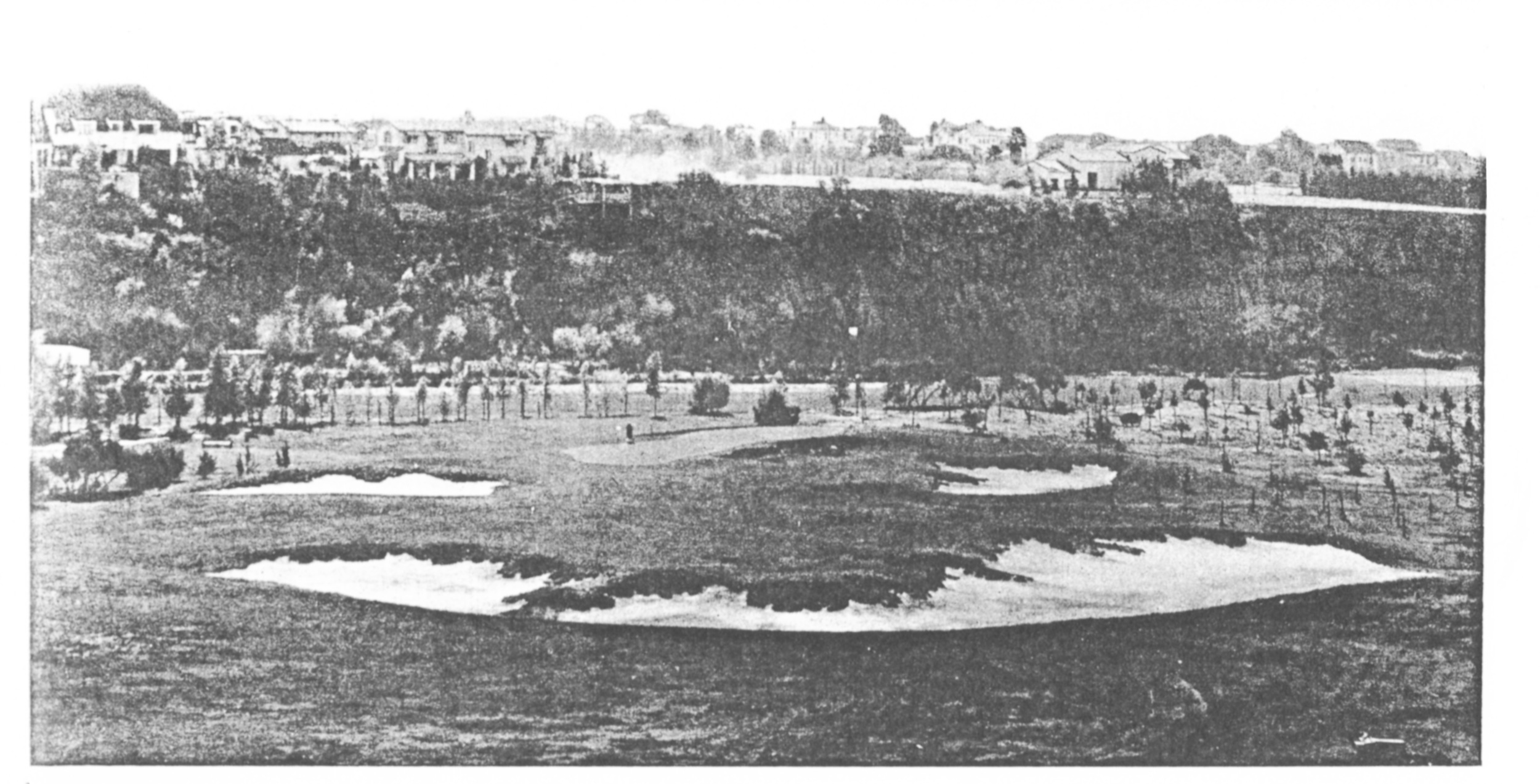90 Years Later: How The 10th At Riviera Evolved
/The 10th hole as bunkers are added around the green in 1928. The left “lay-up” bunker had also been recently installed. The two foreground bunkers and far right bunker were part of the original design.
A few things to remember about Riviera when it hosted its first Los Angeles Open 90 years ago.
—The course was in the “countryside” and a bit of a gamble as a location so far from the city center downtown.
—Riviera was just a year-and-half old with a reputation for extreme difficulty (“Where do the members play?”-Bobby Jones).
—The course underwent modifications prior to the tournament by George Thomas and Billy Bell despite concerns about the difficulty.
When I wrote The Captain in 1996, a year after The Riviera Country Club : A Definitive History, we only knew from mentions in the tournament program that modifications were made to the 5th and 9th holes (greenside bunkers added). A huge bunker on the 7th fairway could also be seen in aerial photos, as could the most significant of all: new bunkering at the world famous short par-4 10th.
After the books were published, I traveled to Golf House and with the help of USGA researcher Patty Moran, found many wonderful articles including this Country Club Magazine piece below by Scotty Chisholm, co-founder of the L.A. Open and friend to Thomas, Bell and many other luminaries.
In it he details why the bunkers were added by Captain Thomas throughout the course under Billy Bell’s supervision—a right he and Bell retained when taking the commission in 1926.
The remainder of the story. Also note the “Boles McCrackan’s Bletherings” by Chisholm explains Riviera’s 6th hole design by Thomas and when the hole was a 145-yarder, not as played from the silly back tee since added.
The explanation of 10th hole changes suggests the original bunkerless green was not challenging enough.
“This hole has been too easy to score on even for the so-called dubs. It measures 320 yards and it is a well known fact that the golf architect of today experiences more difficulty in designing a hole of this length than any other. Although the green lies at almost right angles to the tee and difficult to hold with a pitched shot, Thomas has decided to trap it heavily to the right and cut down the putting surface.”
That decision proved a brilliant one, though as the bunkers have become deeper, the green smaller and more pitched with modern speeds pushing 13, the 10th has teetered on the edge of silliness.
Playing now as a long par-3 due to modern driving distances, some of the lay-up strategy is gone as well and silly bottlebrush bushes are needed to defend the hole from even more tee shots driving near the green without regard for accuracy.
Rain this year may take some of the fire out of the 10th green, and that’s not all bad given how it has teetered on the edge of sanity in recent playings. Regardless, the changes made 90 years ago have held up well and are a credit to the original architect’s willingness to make adjustments. And, contrary to an attempted scam designed to reduce the role of Thomas and Bell, the changes were very much made by the original designers as documented at the time.
In the 1929 L.A. Open program after bunkers were added around the green.















